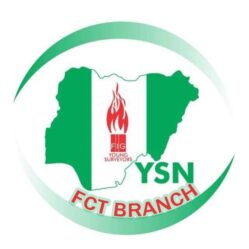Let’s look at some solutions targeting today’s topic:
1. Technological Advancements and Adoption
Facilitate Access to Modern Equipment: Professional bodies, government agencies, and private sector stakeholders can establish partnerships to subsidize or provide leasing options for high-cost equipment like drones, GNSS receivers, LiDAR systems, GPRS and Echo Sounder.
Mandatory Continuous Professional Development (MCPD): Regular Workshops, Capacity Building for Human Capital Development, Training and Retraining sessions, and Certification Programs on Modern Surveying Technologies should be organized. Professional associations, universities, and private companies can collaborate to offer MCPD programs that focus on new software, data processing, and emerging technologies.
2. Land Administration and Management Challenges
Streamline Land Registry Processes:
Digitizing the land registry and cadastral system would improve transparency and efficiency in land administration.
Blockchain technology could also be explored for secure, transparent, and tamper-proof land ownership records.
Centralize and Digitize Cadastral Data:
Developing a National Land Information System (NLIS) where cadastral data is stored and easily accessible can reduce land disputes. Creating a centralized database managed by government agencies can simplify property registration, prevent boundary conflicts, and enhance land administration.
3. Regulatory and Institutional Issues
Strengthen Licensing and Accreditation:
Regulatory bodies like the Surveyors Council of Nigeria (SURCON) could enforce high registration standards and increase penalties for quakery.
4. Funding and Investments Constraints
Increase Government Funding for Surveying Projects:
Advocacy for higher budget allocation for surveying and mapping projects is essential. Highlighting the importance of surveying in national development and infrastructure projects can drive this support.
Encourage Private Sector Investment:
Surveying firms could explore partnerships with technology providers, research institutions, and international donors to access financing and support for advanced equipment. Offering tax incentives for companies that invest in local surveying infrastructure could also help.
5. Urbanization and Environmental Concerns
Support Sustainable Urban Planning: Surveyors should advocate for their role in urban planning to ensure infrastructure aligns with sustainable practices.
Regularly updated land-use planning based on Environmental Impact Assessments (EIAs) would help accommodate urban growth without compromising ecosystems.
Account for Environmental Factors in Surveying:
Including environmental monitoring in surveying activities, such as erosion control and flood risk assessments, ensures that infrastructure projects are resilient to environmental changes. Incorporating satellite data and GIS can help with this type of monitoring.
6. Data Availability and Management
Develop a National Spatial Data Infrastructure (NSDI):
Establishing an NSDI would enable centralized storage, management, and sharing of geospatial data, reducing duplication and inconsistency. This requires collaboration between government agencies, private companies, and academia.
Improve Data Security Protocols:
Surveying firms and government agencies must invest in cybersecurity to protect sensitive data. Secure storage systems, encrypted networks, and strict access controls are essential for safeguarding geospatial information.
7. Education and Professional Development
Modernize Surveying Curricula:
Universities should update their curricula to include new technologies such as Programming, Remote Sensing, GIS, and Data Analysis Software.
Developing partnerships with industry to provide students with hands-on experience can bridge the gap between academia and industry needs.
Expand Access to MCPD Programs:
Professional bodies can establish regional training centers and provide online courses to make MCPD more accessible, especially for Surveyors in rural or remote areas. They can also collaborate with international organizations to bring global best practices to Nigeria.
8. Public Awareness and Perception
Raise Public Awareness of Surveying’s Value:
Surveying organizations can conduct awareness campaigns to educate the public and policymakers on the essential role of surveying in infrastructure, land management, and environmental protection. Organizing public seminars, webinars, and community workshops would help improve public perception.
Engage Media to Highlight Surveying Contributions:
Surveying bodies can work with the media to showcase successful surveying projects that benefit communities.
Highlighting these stories in popular media can boost the profession’s visibility and public understanding.
These solutions would require coordinated effort among government, professional bodies, educational institutions, and the private sector to improve the surveying profession’s infrastructure, training, and public awareness, ultimately enhancing its contributions to Nigeria’s development.


